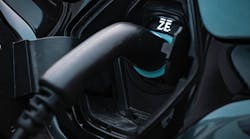North America is due to become the largest market for e-mobility in the next 5 years. And, last month, President Biden proposed spending $20 billion to electrify at least 20% of school buses and $25 billion to electrify transit vehicles as a pivotal part of the American Jobs Plan. However, purchasing e-busses and e-trucks is only half the battle.
Simply put, the US needs to create the charging infrastructure to support electric mobility.
With hopes of capitalizing on the opportunity, a global market leader in fast charging systems within public transport, e-trucks, marine, mining and port equipment, Heliox, is it expanding its reach with North American headquarters in Atlanta.
Heliox’s North American headquarters will be based in Atlanta, a growing e-mobility hub, and will serve as the corporate office and research and development hub. Heliox will manufacture and assemble all products for the North American market in the United States meeting all UL and Buy America standards.
While the company has experienced steady growth in the European market, it views North America as prime for high growth opportunities. “We view the next 2-3 years as critical to the adoption of EV charging systems and standards in the US,” David Aspinwall, Heliox newly hired president of North America tells IndustryWeek. “We intend to leverage our European experience and successes to move quickly in North America.”
By 2030, Bloomberg estimates that 58% of municipal busses and 28% of light commercial vehicles will be electric. Last month, President Biden proposed spending $20 billion to electrify at least 20% of school buses and $25 billion on electric transit vehicles as part of the $2.3 trillion infrastructure and jobs plan. To support this initiative, the U.S. needs to create a charging infrastructure to support rapid electric mobility expansion.
Heliox currently has over 1600 high-powered, fast charging points worldwide, including one of the world’s largest e-bus projects at Schiphol Airport in the Netherlands. Heliox’s mobile 50kW charger, which is lightweight, on wheels, and uses existing infrastructure, can serve as an entry point for organizations that are ready to enter the e-mobility market.
According to Aspinwall, Heliox offers two main advantages to owner operators. “We have a unique line of mobile charges making an easy first investment into EV charging systems as well as a reliable back up system for single point operators,” he says. “Secondly, our larger depot and opportunity charging systems provide the fast charging solution needed by vehicles today, plus the unique ability to scale and growth with the owner operators fleet in a very fast and economical way.”
The biggest challenge facing the looming deployment of a solid charging network? Education, explains Aspinwall. “This is a new technology and infrastructure,” he says. “So educating the market from system owner/operators, to vehicle producers, to field service technician will take time. This is also one of the main reasons we will opening a training and education center in Atlanta.”




